Once upon a time, in the far away mountainous region of Northern Argentina, a group of nomads decided to form a small town at the bottom of the hills.
These surrounding hills looked just like any other unimpressive mountains – dull, with no colours. “Boooring!” said the creative and imaginative children of the town. This is unacceptable to them and they complained to the adults. What is life without colours?
Their pleas to the adults fell on deaf ears. To the adults who had lost passion in life and hated their 9-5 day jobs, it was normal and something to ‘get used to’.
“Go do your homework!” the adults snapped, as they continued binge watching their boring TV and munching on Andean Potato Chips.
What happens when you ignore kids and tell them to do their homework? They rebel, of course! These kids formulated a plan to decorate the hills.
The Hill of the Seven Colours
Like how God created the world in 7 days, these kids decided to paint the hillside for 7 nights. Each night, they disappeared from their beds – while the adults were asleep – and snuck out with their magical paintbrushes and let their imagination let loose.
The kids made sure to return to bed before the adults woke up. And each morning, the adults woke up with a surprise: the hill had a new colour. This happened for 6 days straight until the final day when they woke up slightly earlier than usual and realized that the kids were missing.
They panicked and looked everywhere in town but could not find the children. What neglectful parents!
It was only when the kids skipped down the hillside, laughing happily and playing heartily, that the adults realized that the hill is covered with seven different colours, painted by their very own children.
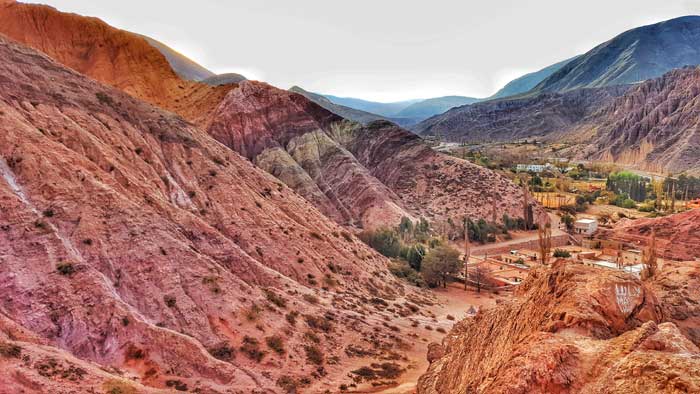
That is the legend of the Hill of the Seven Colours (Cerro de los Siete Colores) and every year, the townsfolk of Purmamarca has a celebration in honour of the painting of the colourful hillside.
At the heart of the UNESCO declared Quebrada de Humahuaca is the little village town of Purmamarca. With its dusty, red soil streets and one-story adobe mud houses, Purmamarca sits well amongst the imposing multicolour hills.
In the Quechua tongue, Purmamarca translates to ‘Town of the Virgin Land’. It is a little pre-Hispanic village with origins dating back to the 16th century when it was part of the Inca Road and is located at the intersection of two Andean routes, towards Chile to the west and Bolivia to the North.
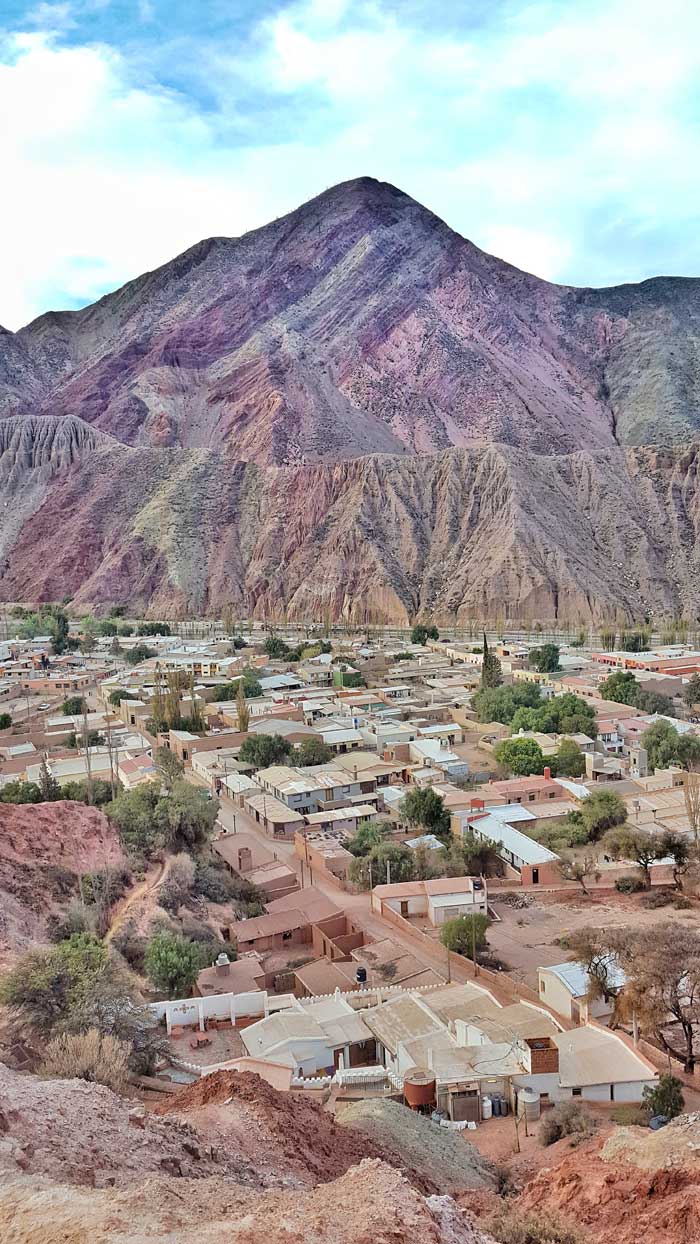
Town is an overstatement for this few blocks of low-levelled buildings. 15 min is enough to visit the whole area, including its main plaza, the Church of Saint Rose, and the cabildo – the smallest town hall in the whole country.
Dotting the plaza are numerous colourful souvenir stands – a vibrant contrast to the beige walls of the buildings – offering hand-knitted ponchos and blankets with saturated hues, tapestries and potteries with intricate patterns, and even musical instruments and silver mate cups that will inevitably make their way into your backpack, even when you know you never needed them.
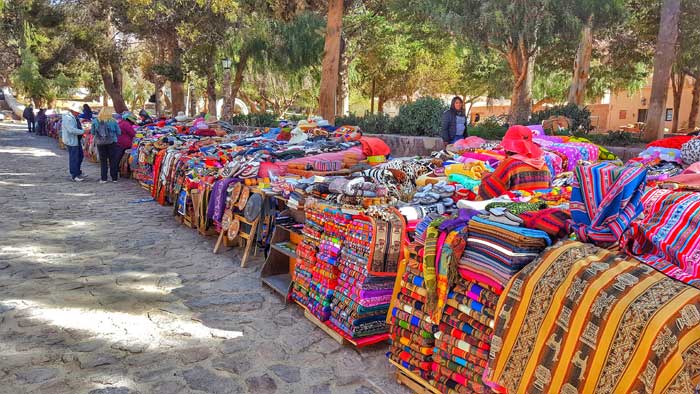
To me, these souvenir stands are a modern eyesore to the natural surroundings, but is a sad reality when a place becomes touristic.
But no one comes to Purmamarca for the souvenirs! The main reason why I – and all tourists – came is for the Hill of the Seven Colours. Whether you believe the legend or not, this hill – treeless and shorter than the dull-slate green hills behind it – stood out for me.
If there were any geography rules, this hill broke them all. Its ochre, yellow, orange, green, brown, lilac and violet colours – painted like a canvass – crushed the boring traditional image of brown and green mountains. Those kids sure did an excellent job.
Or if you prefer the scientific reason; the different colours were formed by claystones, mudstones, limestones and other different kinds of rocks, during different time periods, from 1 million to more than 600 million years ago. The hill itself was formed by the movements of rivers and lakes and even tectonic plates.
I’m not sure about you, but I prefer the legend.
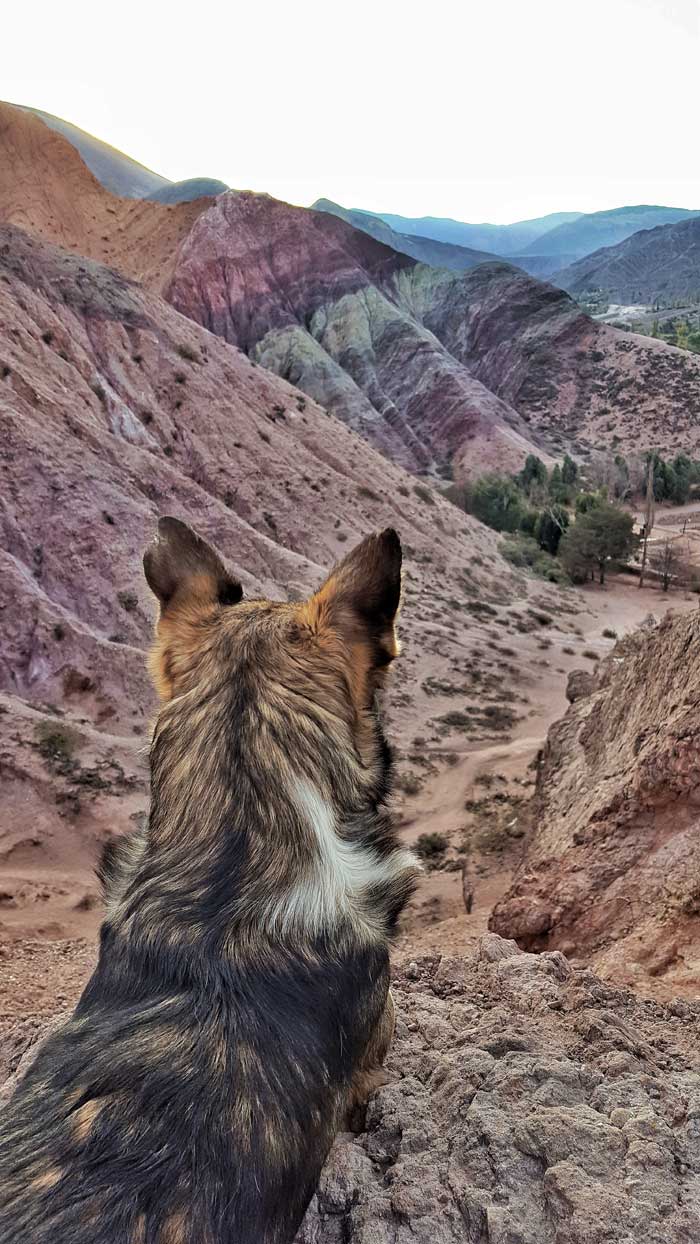
The locals of the town also refer to the it as the Hill of the Seven Skirts, because the colours resemble the traditional long skirts worn by Andean women.
Some people claimed they can only see 4 colours, but I clearly counted 7 different shades. And the best time to see the colours is in the morning, 45min after dawn. Sunset isn’t as mesmerizing. I know, because I sat on a hill for an hour taking a timelapse video.
In the town of Purmamarca is a mirador (a viewpoint) that is really just a mound of dirt. A woman stationed there decided to charge a ARS $5 admission fee - which probably goes into her pocket - in exchange for a worthless entry ticket. The windy lookout does provide a 360-degree view of the town and its little houses and surrounding hills. Plus it gives a sense of being on top of the world, even only for that instance.
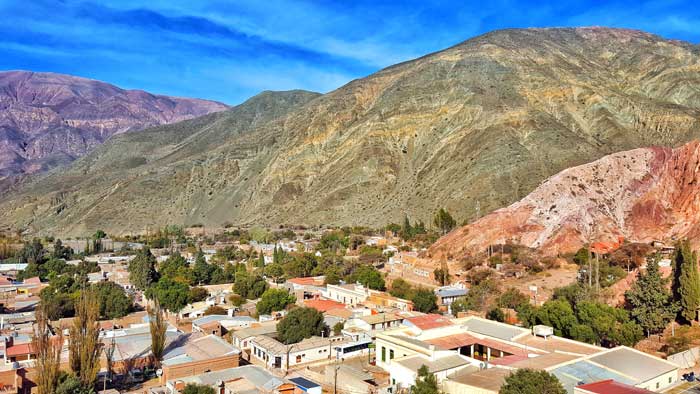
The Paseo de los Colorados (Walk of Colours) behind the town is a scenic 3km walk with red cliffs, green hills, and lots of cacti along the route. After 40min of walking, I had no idea where I was heading. Looking at maps.me, I was off-path. I turned back to chase the sunset instead.
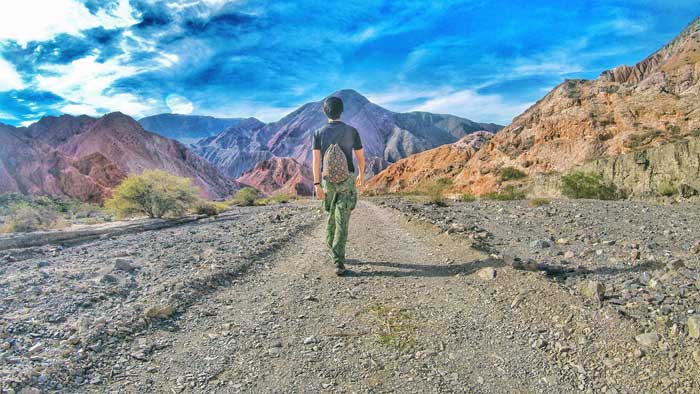
On TripAdvisor, the Paseo receives glowing reviews, so it might be worth a visit – if you know when you’re heading to.
How to Go to Purmamarca
Purmamarca is easily accessible from the cities San Salvador de Jujuy and Salta. Multiple buses leave the bus terminal each day.
I stayed at Tilcara and took a 30min bus ride. Locals do the same. Tilcara is a better base to stay if you want to explore the gorgeous Quebrada de Humahuaca region. You can easily spend one week in the Northwestern part of Argentina.
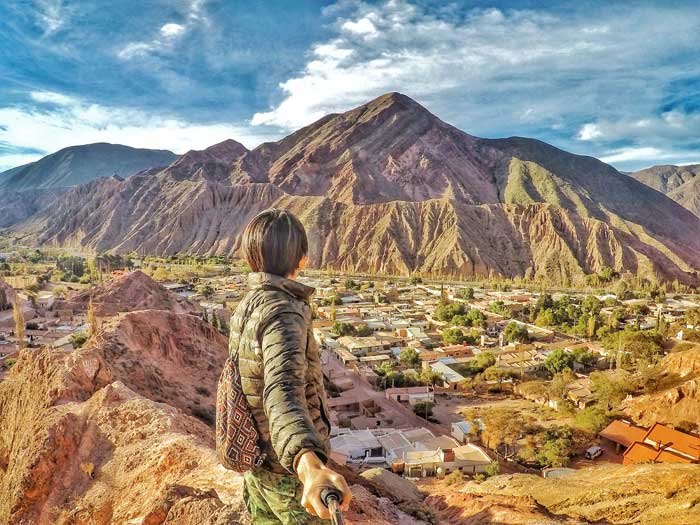
And now, it’s your turn.
